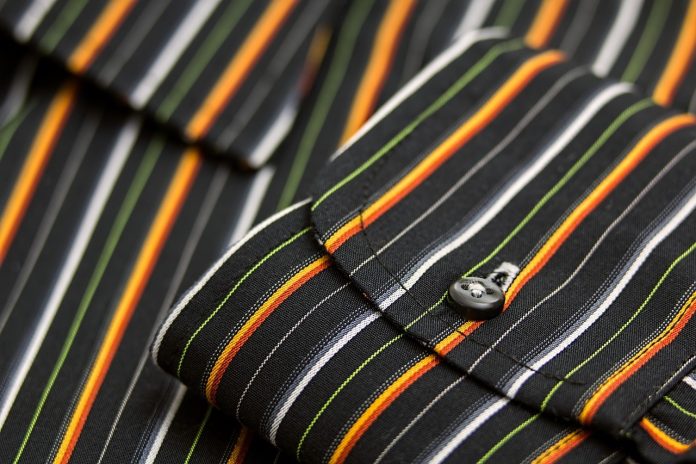Textiles are used in everything from our clothes, vehicles, and furniture to the bandages we use to treat illnesses and the buildings that protect us from the elements. Each fabric is carefully chosen for its particular design and characteristics. But what if the clothes you were wearing could track your heart rate and send your doctor notifications about any medical issues? Or if the bandages you apply to your skin are administered medication to treat the wound as well as cover it. A hard helmet that may alert a worker in the construction industry to carbon monoxide toxicity based on skin fluids would be of interest. Smart textiles can help in this situation.
What Are Smart Textiles?
Fabrics are a combination of fibres and polymers, natural and man-made, that are constructed through a variety of techniques. Each blend of fabric serves a different purpose, individualized for a particular climate or function. Imagine a fabric that can respond to a temperature change and keep you comfortable, much like your skin. With the ability to transform, less product is needed which produces less waste.
What Characterizes Smart Functional Textiles?
The development of technical textiles has been influenced by the photonics and electronics sectors. The expansion of functional fabrics known as smart textiles is made possible by the combination of sensor arrays with plastic optical fibre. Advanced yarn systems and textile formation methods make up the broad terrain of technical textile manufacture.
Smart textiles are made by combining technology and fibres, depending on their intended function. These fibres include fibre optics, various tiny electronics, shape-memory polymers, encapsulated phase transition materials, and conductive yarns and polymers. They may also use external additions, such as:
- Sensors
- Chemical treatments
- Thermochromic dyes
What Are Smart Textiles Used For?
Smart textiles generally belong to two main categories:
Aesthetic: The fashion industry has seen a recent emergence of smart fabric. Smart fabrics with an aesthetic appeal may interact with their surroundings, light up and change color, and more. The new technology has already been embraced by fashion designers, who have developed whole collections using intelligent fabrics. Additionally included in this category are design and decor components.
Performance enhancement: Smart fabrics are designed to provide the user with a unique experience, dependent on their purpose. This includes body temperature regulation, reducing wind and water resistance, guarding against radiation, minimizing the effects of space travel, and even controlling the vibration of muscles.
Each type of smart fabric has a specific use and helps to address current problems with both practical and stylish materials.
Which Sectors Use Smart Fabrics?
Any industry may employ smart fabric. These industries have increased their use:
- Military
- Safety
- Transportation
- Medicine
- Entertainment
- Fashion and footwear
- Sports and Fitness
- Architecture
Utilizing Technology to Create a Smart Fabric:
Many industries’ frequent problems are resolved with smart textiles. In a variety of occupations, including those in the military, sports, and law enforcement, controlling body temperature is essential. Instead of depending on layers and being concerned about breathability, the smart fabric can quickly adjust to temperature changes.
Smart textiles will become the solution for many more common issues, possibly replacing bulky hardware objects. The versatility and adaptability of e-textiles allow for a wide range of soft, flexible applications. With durable designs and innovative yarns, these products can stand the test of time.
Integration in the Military:
AFFOA is a consortium of companies, academia, and the Department of Defense. They are developing wearable power sources for military applications. Batteries are a huge cost, due to how many of them soldiers go through to keep their devices running. The development of power source textiles and connectors in body armor and similar fabrics are crucial to creating a reliable system.
Greater Usage of Smart Fabrics
Over the next few years, Grandview Research predicts that the compound annual growth rate for smart textiles will skyrocket. There has been an increase in demand for more complex and intelligent textile goods as technology develops. This has been the main driver of the market in North America, together with the quick development of low-cost smart wireless sensor networks. The rapidly expanding healthcare and construction sectors are credited with driving the market for smart fabrics in Asia-Pacific.
Benefits of Smart Textiles
E-textiles are technologically multifaceted and can help to enhance an individual’s lifestyle in so many ways:
- By using sensors to monitor posture during exercise and textiles that can react to muscle vibrations, proper sports form is ensured and the chance of injury is decreased.
- Users will find it simpler to stay in touch with their friends and family with the option to enable hands-free conversation by simply wirelessly connecting the smart fabric to their phones.
- The quality of life for people with impairments can be improved using the same skills. There are already several design ideas in development for smart textile solutions. Future developments are anticipated to expand the area of disability studies due to e-textiles’ amazing capability for interacting with stimuli, serving as regulators, and communicating.
The Future of Smart Textiles
As technicians continue to develop smart fabrics, their capabilities will expand. The fabric will read stimuli and respond to them with a shift in energy. One of the most significant areas of progression will likely be in the field of health and wellness. Beauty and medicinal companies are looking at ways we can make fabrics that positively affect the wearer’s health. This includes the ability to:
- Utilize sensors to monitor the patient’s physiological state.
- Outfit fabrics with anti-aging properties, lotions, and perfumes
- Administer medicine through wearable textiles
Self-healing and repairing fabric may become a reality. Tears, holes, and seam rips could become a thing of the past. Clothing may evolve from short-term to lifetime purchases. Beyond 2021, integrated electronic textiles will permeate diverse business sectors. Knitting and weaving technologies are setting the standards for e-textile manufacturing.
Conclusion:
Smart textiles are changing the way we think about the role of fabrics for industrial purposes and everyday use. With new technological advancements, we’re moving closer to a future where fabrics are functional, beautiful, and responsive. At the end of this study, we can readily state that smart textile is extremely beneficial to humans. As a result, we must be well-versed in this subject.






